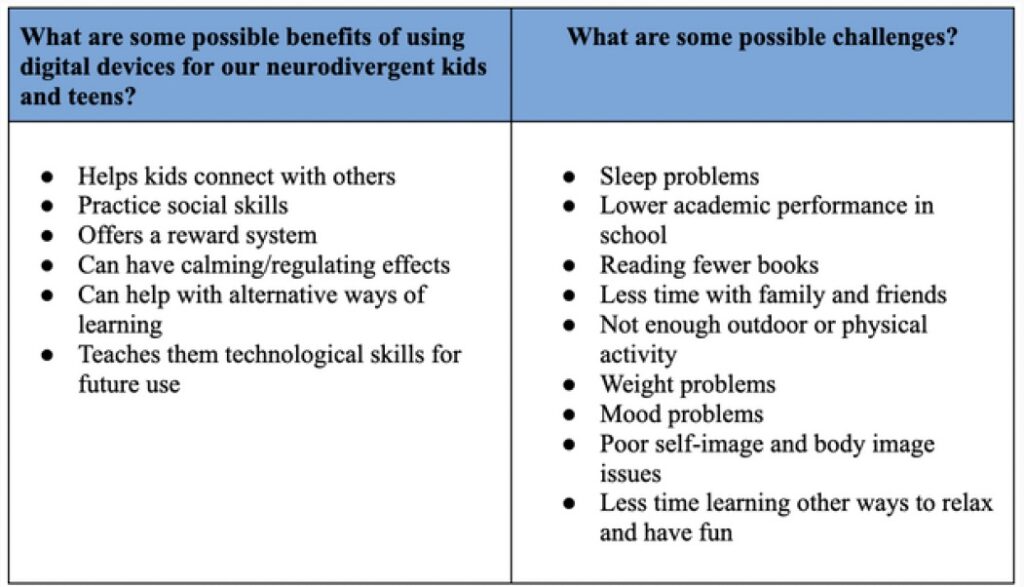It’s true that we live in a digital world. We find ourselves connecting virtually for work, school, social interactions,logistics, and more. We rely on our devices and it’s become a big part of how we function as a society.
As parents, teachers, and caregivers, we may struggle with our kids and their screen time. What effect does too much screen time have on our children and teens? What positive impact does it provide? How much is too much? And if they aren’t on screens, how do we convince them there truly are other things to do?
These are questions you probably wonder or hear a lot about these days. It’s a complex and nuanced topic, and we know that not all screen time is bad. Children and teens do need to use technology for educational purposes, future careers, and as a tool to help them function in a digitalized society.

So what is the right amount of screen time to aim for each day? While the American Academy of Pediatrics has some specific guidelines for screen time restrictions for kids ages 6 and under, experts suggest it may be more effective to set some limits and guidelines for older kids and teens instead of a specific amount of time.
Therefore, keep these guidelines in mind when working with your child or teen to determine how much screen time is enough each day.
- Have a conversation about the difference between screen time for entertainment purposes versus educational and transactional purposes. If your teen is using technology for educational purposes or to connect with a distant friend or relative, then that is different. What amount of time is spent engaging on social media,watching videos, playing video games, and other ways of entertaining themselves?
- Second, what other activities could your child or teen be engaging in during the day? Are they getting their chores done? Eating meals? Spending some time moving through exercise or a sport? Getting outside in nature?
- Third, how much time do you spend together as a family? This can include family outings, dinners together,hanging out, doing home improvement projects, gardening, etc.
- Fourth, encourage other non-device activities like reading, hobbies, sports, music, art, etc. so that your child or teen has something interesting to do outside of being on their devices.
- Fifth, set a good example yourself. It’s hard to tell your child to stay off screens and do other things if you do not.
ADDITIONAL RESOURCES
- Parenting in theScreen Age: A Guide For Calm Conversations
- Disconnected: How toProtect Your Kids from the Harmful Effects ofDevice Dependency
- A Technology SafetyGuide for Parents ofChildren With Autism
- Helping Your Childwith ADHD ManageScreen Time
- The Impact of Screen Time On Neurodivergent Kids -Improving the Lives ofPeople with ADHD
- The Today Show: The Impact of screen time on kids: What’s at stake


